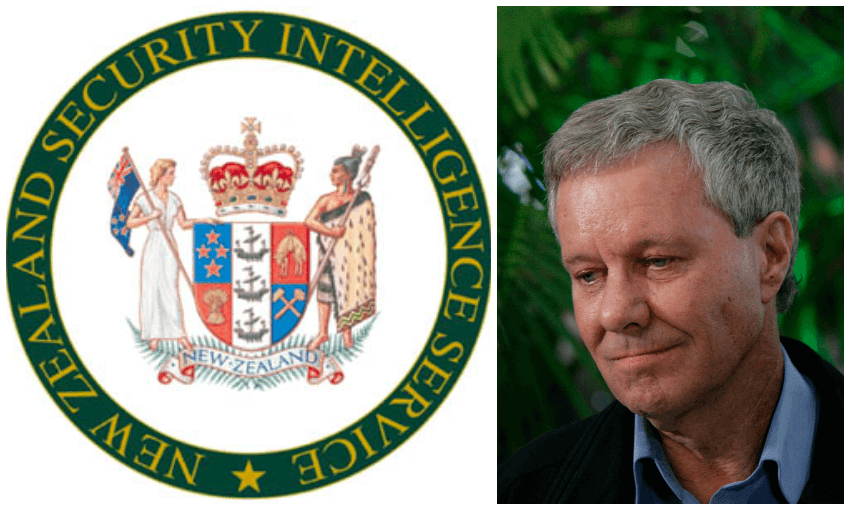The revelation in 2009 that Green MP Keith Locke had been spied on since age 11 caused an uproar and prompted an inquiry into SIS surveillance. Now, he writes, the SIS has been forced to apologise for calling him ‘a threat’ in internal documents.
Last April I received a letter from Rebecca Kitteridge, the director of the Security Intelligence Service, apologising for the way I was referred to in internal SIS documents. She wrote that I had been described as a “threat” in speaking notes for a Joint Induction Programme run by the SIS and the Government Communications Security Bureau since 2013.
In the SIS documents I was identified as an “internal” threat because I “wish[ed] to see the NZSIS & GCSB abolished or greatly modified”. The documents labelled this a “syndrome”.
In her apology, Kitteridge said “the talking point suggests wrongly that being a vocal critic of the agencies means you are a ‘threat’ or a ‘syndrome’. In fact, people who criticise the agencies publicly are exercising their right to freedom of expression and protest, which are rights we uphold, and are enshrined in the Intelligence and Security Act 2017.”
I haven’t gone public on this until now, but given the recent news about several other state agencies spying on people, I decided that what happened to me should be in the public domain.
In his December report, State Services Commissioner Peter Hughes described the state spying on critics of deep-sea oil drilling, like Greenpeace, “an affront to democracy”. Like Kitteridge in her letter of apology to me, Hughes said that it was “never acceptable for an agency to undertake targeted surveillance of a person just because they are lawfully exercising their democratic rights, including their right to freedom of expression, association and right to protest.”
Most disturbingly, many civil servants in the cases Hughes identified must have known about this illegal, anti-democratic surveillance without blowing a whistle on it. In my case, many SIS and GCSB officers must have heard me being identified as a “threat” without challenging it. How else could the disparaging reference to me have stayed in the officer training material for ten years. Kitteridge told me the “threat” label was carried over into the Joint Induction Programme speaking note from a “Protective Security Advice presentation (believed to have been developed in about 2008)” and “a historical security aide-memoire (believed to have been developed in 2012).”
To make matters worse, the ten year period when I was deemed to be a “threat” includes the last three years (2008-2011) of my 12 years as an Member of Parliament. It appears the SIS learnt nothing from the public controversy, in early 2009, when it was revealed that the SIS had a file on me, which they were updating during my time as an MP, with material going up to 2006. This resulted in an inquiry by the Inspector-General of Intelligence and Security, Paul Neazor, which found that “a sitting MP because of his or her function and standing [is] not generally a subject for intelligence collection or surveillance.” This in turn led to a Memorandum of Understanding between the Speaker, the SIS and the Minister in Charge of the SIS, signed off in 2012, endorsing the Inspector-General’s recommendations.
This MOU also had a section on “political neutrality” whereby the SIS “does not take any action for the purpose of furthering or harming the interests of a political party.” Clearly the SIS and GCSB were acting in a politically biased manner by treating my parliamentary critique of the intelligence agencies, delivered officially on behalf of the Green Party, as representing a “threat”.
It seemed pretty clear that the SIS had breached to MOU requirements for political neutrality, by treating a sitting MP and his views as a “threat”, so I wrote to the current Speaker, Trevor Mallard, about it. He didn’t think the MOU had “been breached in any way.” Mallard side-stepped my contention that the SIS had acted in a politically biased manner, but did admit that “certain materials being used by the security agencies contained inappropriate expressions of opinion regarding your conduct, including during a time that you were a member of Parliament.” He said he met regularly with the SIS Director “and will continue to ensure that she is aware of the need for security agencies to respect the role and independence of Parliament.”
I have to disagree with the Speaker that it was just a matter of the SIS using “inappropriate” language. For a spy agency to describe someone as a “threat” is serious. It identifies them as a target for some form of monitoring or surveillance, and this is what has happened to me over many years. When I got my SIS file, I found it ran for hundreds of pages, beginning in 1955 and ending in 2006. It is a case study in what is wrong with our intelligence agencies. No criminality is identified. I have no criminal record. The file is all about my legitimate political activities, mainly in international peace and justice campaigns (e.g. against apartheid and the Vietnam war), but also in the labour movement. My file illustrates the main function of the SIS over the years, which hasn’t been to track down criminals (which the Police do quite well) but to spy on political dissenters.

